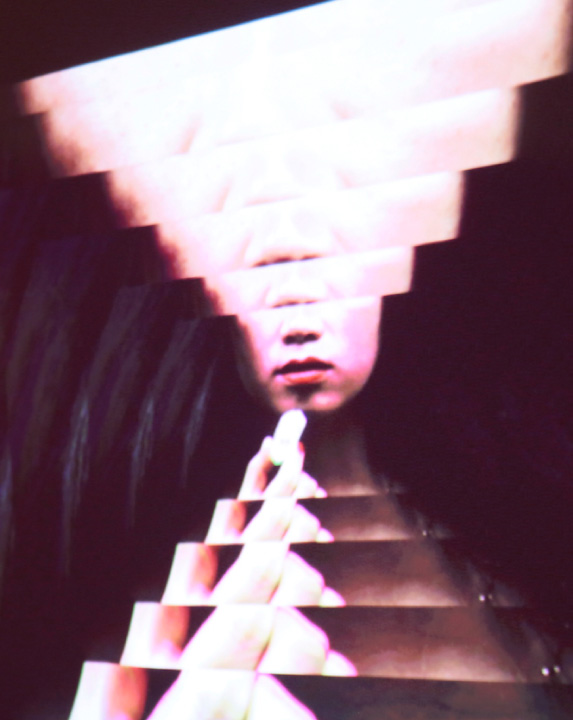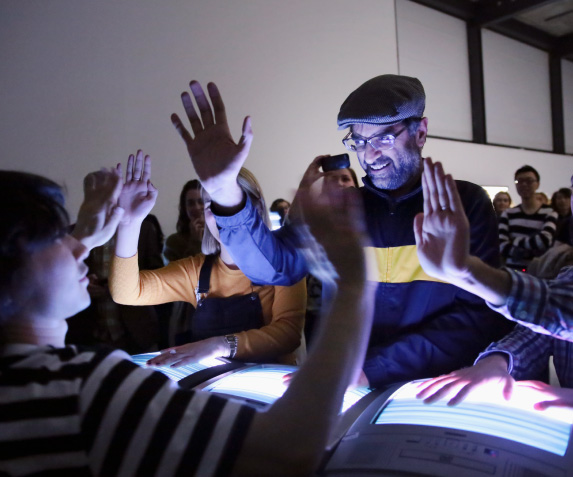Version 2.0 of our Accessibility Strategy
Created by Beatrix Livesey-Stephens. In NEoN’s mission to bring digital arts to everyone, considering accessibility is extremely important. This strategy is a step in making sure NEoN can provide access for disabled individuals and fulfilling that mission. We live in a rapidly changing world, and accessibility is no exception – there are always new accessibility measures being developed, and new technology to create art with. This strategy will continue to evolve with new information and guidance as the state of accessibility and digital art changes. Ongoing conversations are needed every time NEoN considers something new and the state of the intersection of digital art and accessibility changes. Most of what is in this strategy is from other sources, and I have highlighted these places in the references section. We would especially like to thank Glasgow-based theatre company, Birds of Paradise.
This strategy is mainly focused on accessibility for disabled people (i.e physical accessibility, accessibility for neurodivergent people and web accessibility), but accessibility more broadly includes socio-economic accessibility, digital accessibility (i.e relating to digital poverty), and cultural inclusion. Accessibility is all about inclusion, and this includes everyone.
When curating an event, programme of events, or general commission, it is important to keep accessibility at the forefront. Accessibility is something that should be baked in, not added on at the last minute. By choosing accessible platforms, accessible language, and booking captioners and interpreters in advance, and involving them in the process, you are actually reducing the workload and crunch time involved, and making the programme and experience of accessibility more effective. This includes telling people (i.e coworkers, artists, and anyone else) why a specific thing is needed from them, as it helps to see how every bit of information will fit together in the end, and broadens knowledge of accessibility for everyone involved. So much of accessibility activism ends up trying to reinvent the wheel. If you are unsure whether something has been done before, or how to implement a measure, look it up on the internet. It is likely that someone has done it before you.

No piece of art can be “fully accessible”, and should not be labelled as such. In fact, what makes a piece accessible to some people can make it inaccessible to others. In the words of tabletop roleplaying game (TTRPG) designer Jay Dragon (paraphrased):
“Please consider conflicting access needs and insert that phrase into your vocabulary. For example, the medium of podcasts [is] not inaccessible in itself — they are an artistic medium. if you struggle to process them (as I do), then you have an access need if you want to engage with them (in my case, transcripts). If you request your access need and the podcaster is unable to provide them, then that podcast is inaccessible for you. (This is a morally neutral statement! There are many reasons why a podcaster might not be able to provide that). This doesn’t mean the podcaster should be writing articles instead of podcasting — long articles can also be inaccessible for people, there is no perfect method of communicating information which everyone can immediately understand. In some cases, we might have conflicting access needs — maybe you need the text in bright red comic sans for your dyslexia, and my migraines make it impossible for me to process that without getting a headache. Ultimately, access needs are individual and complicated, and pointing to a medium or an artistic work and branding it inaccessible is a distortion of that language’s purpose and makes it harder to discuss ableism and accessibility.”

References and sources
Accessibility Professionals
Association of Sign Language Interpreters website
The Association of Speech-To-Text Reporters
British Institute of Verbatim Reporters
National Union of British Sign Language Interpreters
National Registers of Communication Professionals working with Deaf and Deafblind People (NRCPD)
Audio Description
Audio description | Edinburgh Festival Fringe
The Ultimate Guide to Audio Description – 3Play Media
Alternative Text
Alt-text decision tree
Alt-text is not a new form to play with, it’s an accessibility tool – Twitter thread and discussion
Harvard University Digital Accessibility site
Braille
Braille – A2i Transcription Services
A2i Transcription Services Price Guide
Sign Languages
PDF Accessibility
Create and verify PDF Accessibility
Captioning
Captioning Style Guide from Talking Type Captions
Live Closed-Captioning on Vimeo
Streamtext
Funding
Arts Council National Lottery Project Grants
Creative Scotland’s Open Fund for Organisations
Game Accessibility
Designing One-Button Games for Accessibility
Game Accessibility Guidelines
Self-Voicing on the Ren’py Engine
Neurodiversity
Am I Autistic by Sonia Boué
Neurodiversity at Work – Supporting Employees Across the Spectrum
Neurodiversity in the workplace – Advisory, Conciliation and Arbitration Service
Tips for supporting neurodiversity in the workplace – Forbes
Making Digital Art Accessible
Digital Creatively Embedded Access – Birds of Paradise Theatre Company
How AI could increase art world accessibility for disabled artists | Dazed
Making your show accessible | Edinburgh Festival Fringe
Painting a Picture of Accessible Digital Art
Resources – Birds of Paradise Theatre Company
The Fringe Guide to Adapting Events for Deaf and Disabled Audiences
Using digital to make the arts more accessible | Nesta
Win-win for disabled arts-lovers and the sector | The Audience Agency
What does “Arts Accessibility” even mean? | Shawna NM Barnes
Web Accessibility
Automated Tools for Testing Accessibility
How can I make my digital work more inclusive?
How to use Semantic HTML – web accessibility Overlay
Factsheet
Web Accessibility Initiative
Other
Equalities, Diversity and Inclusion | Creative Scotland
Talking about disability at work: Supporting disabled people at work – Acas